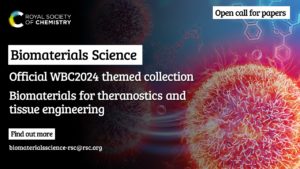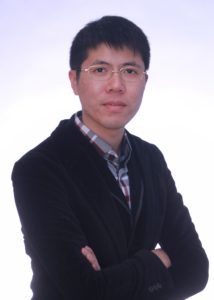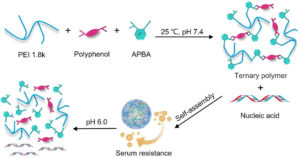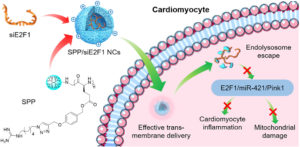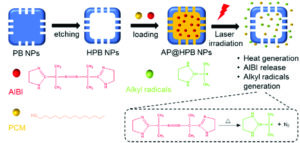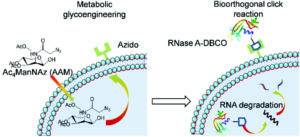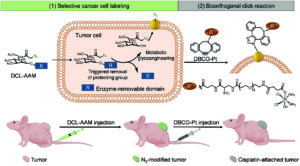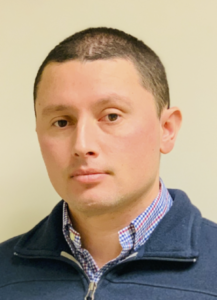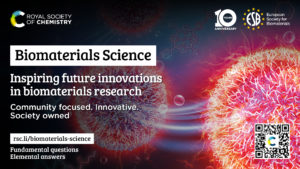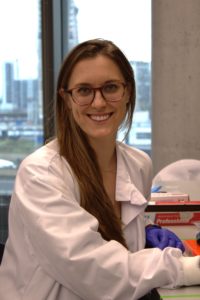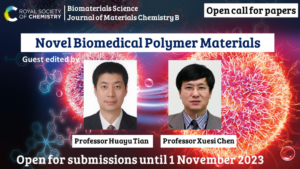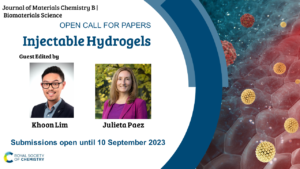Open call for papers – Biomaterials for theranostics and tissue engineering
An official collection of WBC2024
We are delighted to announce that Biomaterials Science will be publishing one of the official themed collections for WBC2024! We are very pleased to announce an open call for papers for this collection on ‘Biomaterials for theranostics and tissue engineering’.
This collection is being guest edited by Professor Lino Ferriera (UC-Biotech, Portugal) from Biomaterials Science and Professor Soo Hong Lee (Dongguk University, Korea) from WBC2024.
Both theranostics and tissue engineering are two of the biggest areas of biomaterials with the potential to revolutionize healthcare. Theranostics conveys the idea of combining both therapy and diagnosis to provide a holistic solution for disease management. Tissue engineering has developed into an advanced and attractive option for the treatment of various disease by combining cells, growth factors and scaffolds. In order to promote the development of the medical field, advances towards clinical translation are crucial. This official WBC themed collection will capture the latest cutting-edge innovations presented at the meeting in both of these rapidly evolving fields and we encourage you to submit your latest fundamental or translational research to feature in the collection.
Appropriate topics include, but are not limited to:
- Clinical advances in theranostics or tissue engineering
- In vivo and in vitro responses to biomedical interventions
- Molecular design of biomaterials for theranostics or tissue engineering
- Biologically inspired and biomimetic materials including self-assembly systems
- Development of carrier systems
- Controlled or sustained release strategies
- Next-generation tools and methods
- Imaging and image guided therapy
- Cell and immunotherapy
Submissions deadline: 1 December 2024


